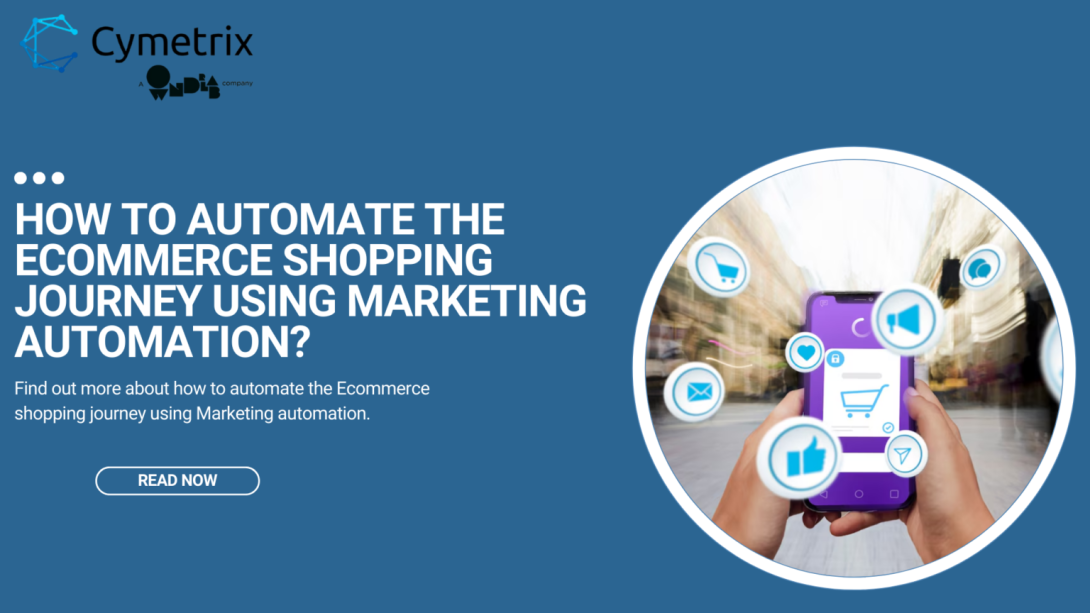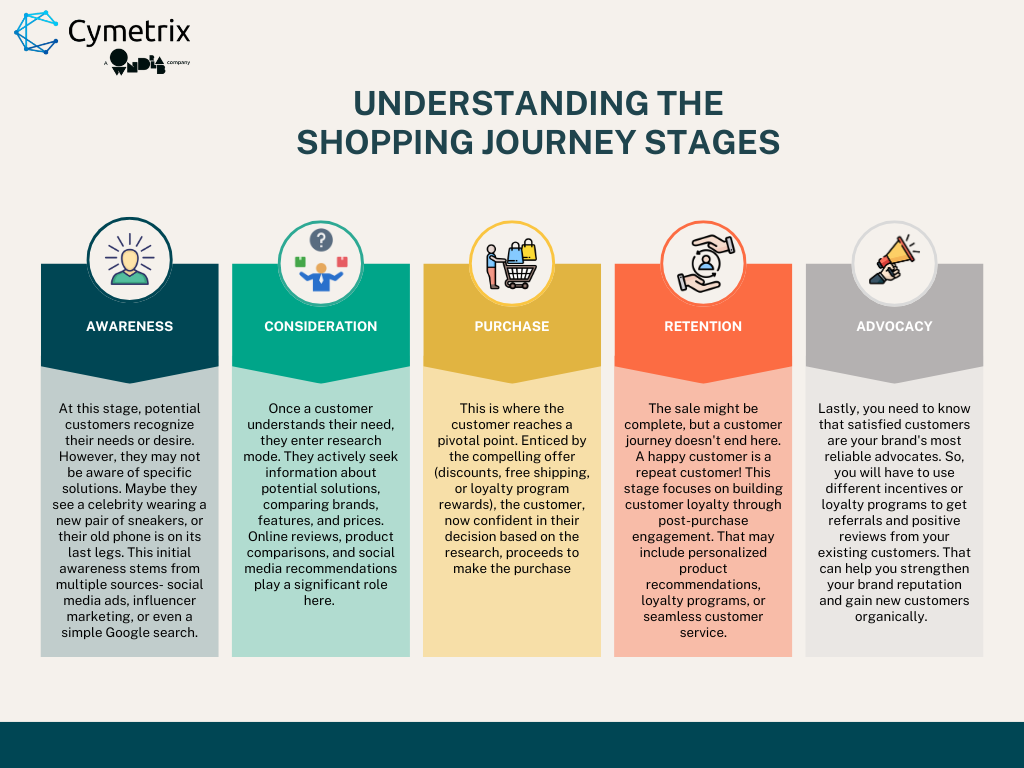
Are you wondering how to navigate your visitors from mere clicks to making a purchase and having a fabulous Ecommerce experience at the same time? Looks like marketing automation holds the key to your problems. Keep reading to know more!
Introduction
In 2024’s fast-paced ecommerce landscape, personalized shopping experiences aren’t just perks—they’re expectations. Mastering the ecommerce shopping journey is now essential for converting clicks into customers. That’s where marketing automation and smart ecommerce personalization come in.
As marketers, we understand the significance of ecommerce personalization and responsiveness. But with busy schedules and an ever-growing customer base, how can we ensure each buyer feels seen and nurtured throughout their ecommerce shopping journey?
That’s where marketing automation steps in, a powerful technological practice that can revolutionize how you connect with customers throughout their ecommerce shopping journey. By using data and targeted messaging, you can transform a browsing session into a delightful buying experience.
But where do you start? At Cymetrix, a trusted provider of Salesforce Marketing Automation consultants, our experts have put together this Ecommerce shopping journey mapping guide for those who are just getting started, helping you navigate the complexities of customer engagement with ease.
Understanding the Ecommerce Shopping Journey Stages
Have you ever wondered what goes behind the scenes of a seamless online shopping experience? It’s not just eye-catching product displays and user-friendly interfaces. Today’s savvy shoppers embark on a well-defined journey before that final ‘add to cart’ click.
Understanding these stages is crucial for crafting an effective automated ecommerce personalization strategies. So, let’s take a look without further a do:

- Awareness: This is where it all begins. At this stage, potential customers recognize their needs or desire. However, they may not be aware of specific solutions. Maybe they see a celebrity wearing a new pair of sneakers, or their old phone is on its last legs. This initial awareness stems from multiple sources- social media ads, influencer marketing, or even a simple Google search.
- Consideration: Once a customer understands their need, they enter research mode. They actively seek information about potential solutions, comparing brands, features, and prices. Online reviews, product comparisons, and social media recommendations play a significant role here.
- Purchase: This is where the customer reaches a pivotal point. Enticed by the compelling offer (discounts, free shipping, or loyalty program rewards), the customer, now confident in their decision based on the research, proceeds to make the purchase.
- Retention: The sale might be complete, but a customer journey doesn’t end here. A happy customer is a repeat customer! This stage focuses on building customer loyalty through post-purchase engagement. That may include personalized product recommendations, loyalty programs, or customer lifecycle automation for online stores.
- Advocacy: Do you know 72% of customers share positive experiences with six or more people? Hence, satisfied customers are your brand’s most reliable advocates. So, you will have to use different incentives or loyalty programs to get referrals and positive reviews from your existing customers. That can help you strengthen your brand reputation and gain new customers organically.
How Ecommerce Personalization Powers the Shopping Journey with Automation?
As you’re aware, the path to purchase doesn’t happen overnight. A customer goes through various stages, but what role does marketing automation play in personalizing ecommerce funnel stages? Let’s have a look :
Awareness Stage
It is at this stage that customer become aware of your brand, while they are in the initial stage of their research. So, by strategically placing automated lead capture forms with downloadable content like ebooks or whitepapers, you can capture valuable user information and nurture their interest.
Additionally, you can also plan and automate a targeted display ad or social media ad campaign to reach users who are likely to be interested in your offerings, while pre-designed welcome email sequences introduce your brand, core values, and unique selling propositions, laying the foundation for a strong customer relationship.
You may want to read: 5 Ways to Use Data for Creating Marketing Magic for Ecommerce
Consideration Stage
At the consideration stage, when the customer is actively researching and evaluating options, you can use automation to provide personalized guidance and support.
For instance, by segmenting your audience based on website behavior you can plan an email drip campaign. Which will eventually help you deliver relevant product recommendations that address your customer’s specific pain points and offer helpful resources.
But what if a question arises during this research phase? Here’s where you can leverage marketing automation and set up chatbots. Once seamlessly integrated into your website and social media platforms, they will provide real-time information, answer customer queries instantly, and offer 24/7 support.
That ensures a smooth customer journey mapping for ecommerce, removing friction and guiding users towards confident purchase decisions.
Purchase Stage
Within the purchase stage, marketing automation can significantly enhance conversion rates and customer satisfaction. By using automation tools, you can streamline your buying experience and ensure a frictionless buying experience. That might include one-click purchase options or integrating secure platforms for storing customer payment information.
Furthermore, you can also use marketing automation to automate post-purchase confirmation emails to trigger upon a successful order. You can use it to provide essential order details and estimated delivery time. That not only instills confidence in purchase but also reduces customer support inquiries.
Retention Stage
A customer journey doesn’t end at purchase! A loyal customer base is vital for sustained success. Especially when the probability of selling to an existing customer is over 60-70%. However, the chances of converting new customers are only 5-20%.
Consequently, you can use personalization in ecommerce marketing automation to design a loyalty program with tiered rewards. These programs incentivize repeat purchases by offering increasing benefits based on the customer’s purchase history.
Furthermore, you can leverage customer purchase data and browsing behavior to send targeted upselling and cross-selling emails with personalized product recommendations. Additionally, you can use AI-powered tools like Salesforce Einstein GPT to suggest products that complement past purchases, driving further sales.
But what about customers who you haven’t heard from in a while? Win back those lapsed customers with a strategic re-engagement campaign. You can identify inactive customers and send personalized emails with exclusive discounts or re-engagement content based on past behavior to entice them to your store.
Advocacy Stage
Loyal customers are your brand’s most essential advocates and marketing automation can help you cultivate this advocacy. You can set up automated review requests to trigger after purchases or positive interactions, which will help generate valuable user-generated content and build social proof.
Additionally, implementing marketing automation to streamline social advocacy programs, and makes it easier for customers to share their positive experiences.
Recognizing and rewarding loyal customers further strengthens the advocacy stage. Marketing Automation empowers you to implement exclusive reward programs, offering loyal customers early access to new products or special privileges. That incentivizes repeat purchases and cultivates a dedicated base of brand advocates.
How Can We Help?
Improving shopping journey with automation may seem daunting, but with the right partner, you can seamlessly integrate these strategies into your business. As one of the leading Salesforce consulting companies, Cymetrix offers tailored solutions to enhance ecommerce funnel personalization with marketing automation. Their expertise can guide you through the process, ensuring that every customer interaction is meaningful and impactful
Conclusion
By using marketing automation, you’ve unlocked the potential to transform your customer’s shopping journey into a seamless, ecommerce personalized experience. From targeted messaging to automated re-engagement campaigns, you’ve equipped yourself with the tools to nurture leads, drive conversions, and cultivate brand loyalty.
But remember, marketing automation may be a powerful practice to help you resolve your Ecommerce challenges. However, it can be a challenging task to implement and integrate it with your existing setup. That’s where Cymetrix, offshore salesforce commerce cloud partner in india can help you out. So, what are you waiting for? Get in touch with us now and schedule a consultation with our experts to learn more about how we can help you drive maximum value with Salesforce Marketing Cloud and Commerce Cloud.
FAQs
What is ecommerce personalization in marketing automation?
Ecommerce personalization in marketing automation is the strategic use of data-driven tools and AI to deliver tailored shopping experiences at scale. By analyzing customer behavior, purchase history, and preferences, automated systems dynamically adjust content, product recommendations, and messaging across channels (e.g., emails, websites, ads). For example, a shopper who abandons a cart might receive a personalized email with the exact items viewed, while returning customers see curated product suggestions. This approach boosts relevance, drives conversions, and fosters loyalty by treating each customer as an individual—without manual effort.- How does marketing automation improve the ecommerce shopping journey?
Marketing automation streamlines the shopping journey by eliminating friction and delivering timely, context-aware interactions. It nurtures customers through behavioral triggers—like cart abandonment emails, post-purchase follow-ups, or browse-recovery campaigns—guiding them seamlessly from discovery to purchase. Automated segmentation ensures high-value shoppers receive VIP treatment, while AI-powered chatbots resolve queries instantly. By unifying omnichannel touchpoints (e.g., SMS, email, social media), it creates a cohesive experience that anticipates needs, reduces decision fatigue, and accelerates conversions. The result? Higher engagement, repeat purchases, and operational efficiency for brands.








